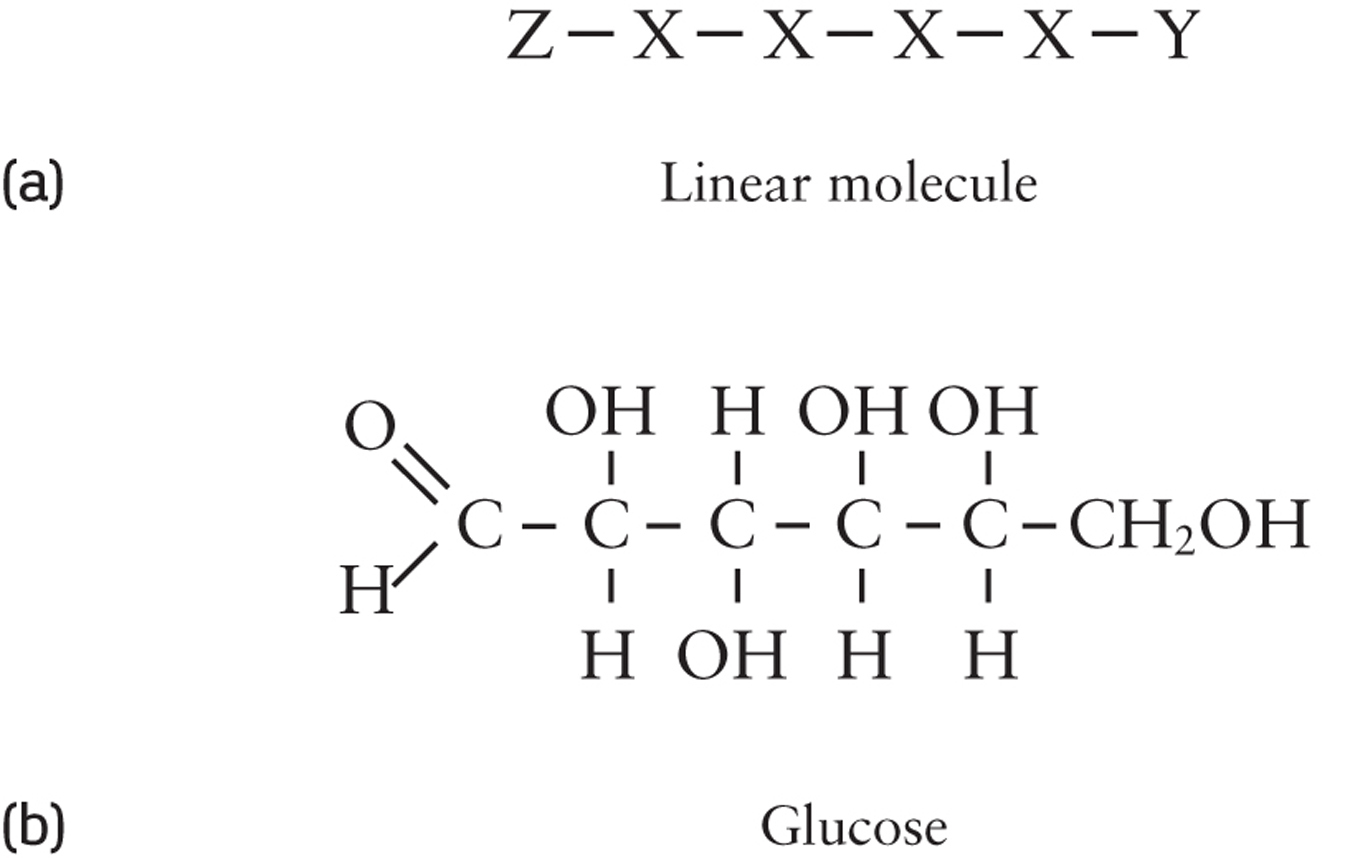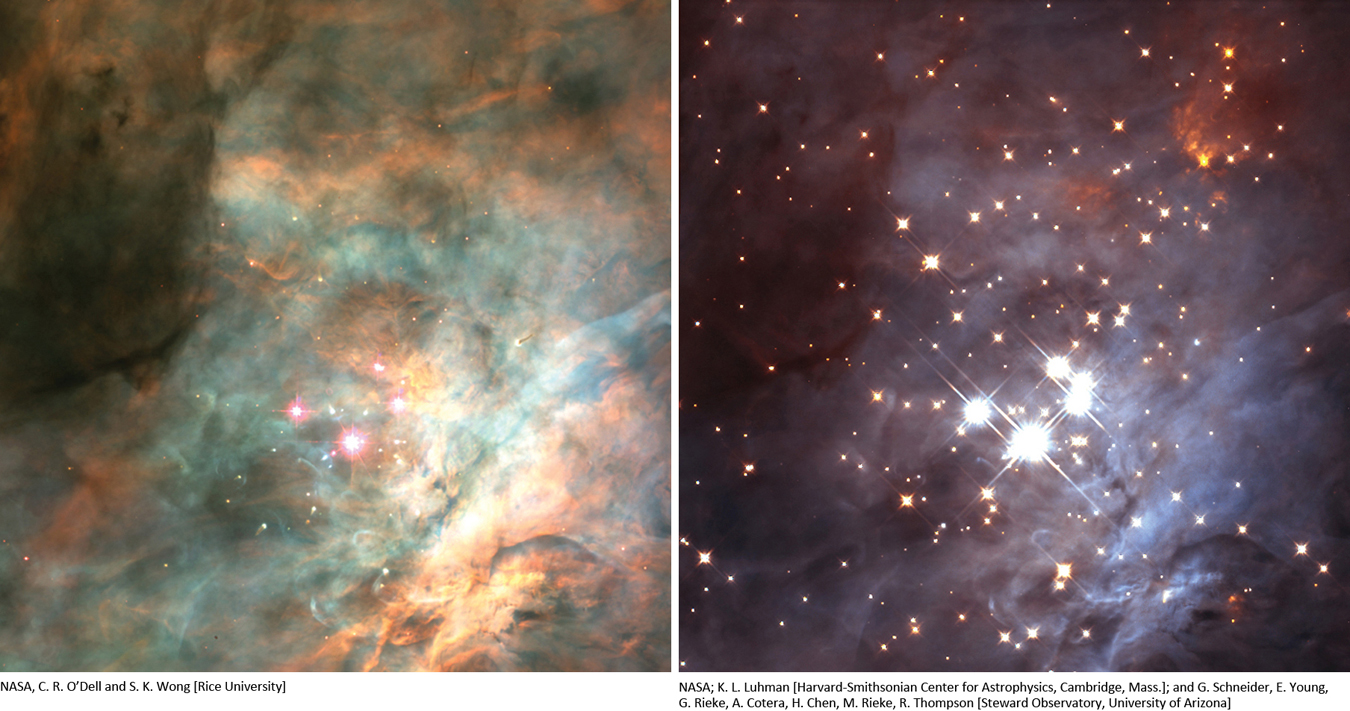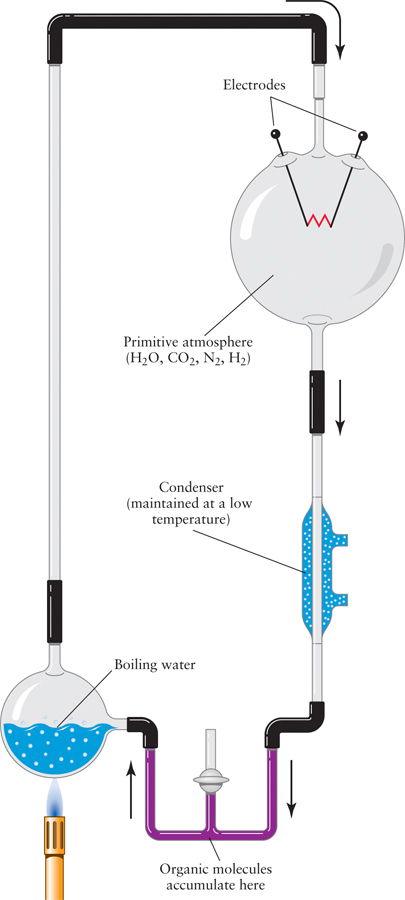8-1 Planets and the chemical building blocks of life are found throughout space
We are relatively certain that alien life-forms are not quietly observing Earth and occasionally visiting the surface to capture and conduct experiments on unexpecting human beings. But, for a moment, imagine you were an alien from a distant star system sent to explore Earth. If you landed your spacecraft at any random spot on Earth, would you likely see a human being? Remembering that three-quarters of Earth is covered with water, you are much more likely to find fish than humans. But one thing is certain—you would definitely find that tiny bacteria and plankton are the most common forms of life on Earth!
Suppose instead you are assigned the task of being the first person to look for life on another planet beyond Earth. How might you recognize which of the strange objects found around the solar system are living and which are not? Questions such as these are central to astrobiology, the study of life in the universe. Most astrobiologists suspect that if we find living organisms on other worlds, they will be “life as we know it”—that is, their biochemistry will be based on the properties of the carbon atom, as is the case for all Earth-based life. Let’s first consider the unique nature of carbon atoms.
Organic Molecules in the Universe May Be the Basis for Life
Of all the atoms we know about, carbon seems to be the best candidate around which to build life-forms. The reason is that carbon has the most versatile chemistry of any element. Carbon atoms can form chemical bonds to create especially long and complex molecules (Figure 8-1). These carbon-based molecules are the foundation upon which all living organisms are made.

What makes carbon useful for life is that carbon-based molecules can be linked together to form elaborate structures, such as chains, lattices, and fibers. Some of these structures are even capable of complex, self-regulating chemical reactions. These reactions are required for life processes to occur. Furthermore, the primary constituents of the molecules of life found on Earth—carbon, hydrogen, nitrogen, oxygen, sulfur, and phosphorus—are among the most abundant elements across the universe. Taken together, the versatility and abundance of carbon suggest that extraterrestrial life is also likely to be based on organic chemistry.
Carbon molecules exist widely throughout interstellar space and are incorporated into planets during star and planetary system formation. One of the most common carbon-based molecules is carbon monoxide (CO), which is made when a carbon atom and an oxygen atom collide and bond together. Carbon monoxide is found in great abundance within giant interstellar clouds like the one shown in Figure 8-2. Carbon atoms can also combine with other elements in ways that show up as long wavelength emission lines seen in interstellar clouds.

191
The chemical building blocks for life exist throughout the universe, but we do not yet understand how they came together to form life.
If life is likely to be based on carbon-based molecules, then these molecules must initially be present on a planet’s surface in order for life to arise from nonliving matter. Evidence for this comes from meteorites like the one shown in Figure 8-3. These are ancient meteorites that date from the formation of the solar system and that are often found to contain a variety of carbon-based molecules. The spectra of comets—which are also among the oldest objects in the solar system—show that they, too, contain an assortment of molecules needed for life. Comets and meteoroids were much more numerous in the early solar system than they are today, and they were correspondingly more likely to collide with a planet, depositing these materials on the planet’s surface in great quantities.

Question
ConceptCheck 8-1: Why would life-forms throughout the cosmos likely be based on carbon?
Question
ConceptCheck 8-2: How could carbon molecules end up on the surfaces of planets?
The Miller-Urey Experiment Demonstrated Possible Conditions for Life to Exist
Comets and meteorites would not have been the only sources of carbon material on the young planets of our early solar system. Back in 1952, the American chemists Stanley Miller and Harold Urey designed experiments to see if the chemical building blocks of life could be made from simple chemicals, under the right conditions. They created a “soup” of simple chemicals that likely prevailed on the surface of a primitive Earth. In a closed container, they mixed these chemicals into a sample “atmosphere”: a mixture of hydrogen (H2), ammonia (NH3), methane (CH4), and water vapor (H2O), the most common molecules in the solar system. Miller and Urey then exposed this mixture of gases to simulated atmospheric lightning for a week. At the end of this period, the inside of the container was coated with a reddish-brown substance rich in amino acids and other compounds essential to life.
Since Miller and Urey’s original experiment, most scientists have come to the conclusion that Earth’s primordial atmosphere was composed mostly of carbon dioxide (CO2), nitrogen (N2), and water vapor outgassed from volcanoes, along with some hydrogen. Modern versions of the Miller-Urey experiment (Figure 8-4) using these common gases have also succeeded in synthesizing a wide variety of carbon-rich compounds.

192
CAUTION
It is important to emphasize that scientists have not created life in a test tube. While organic molecules may have been available on the ancient Earth, biologists have yet to figure out how these molecules gathered themselves into cells and developed systems for self-replication. Nevertheless, because so many chemical components of life are so easily synthesized under conditions that simulate the primordial Earth, it seems reasonable to suppose that life could have originated as the result of chemical processes. Furthermore, because the molecules that combine to form these compounds are rather common, it seems equally reasonable that life could have originated in the same way on other planets. However, having the right chemical building blocks be commonplace throughout the universe does not guarantee that life is equally commonplace.
Question
ConceptCheck 8-3: What did Miller and Urey create when they passed electricity through their sample of “atmosphere” containing a mixture of hydrogen (H2), ammonia (NH3), methane (CH4), and water vapor (H2O)?